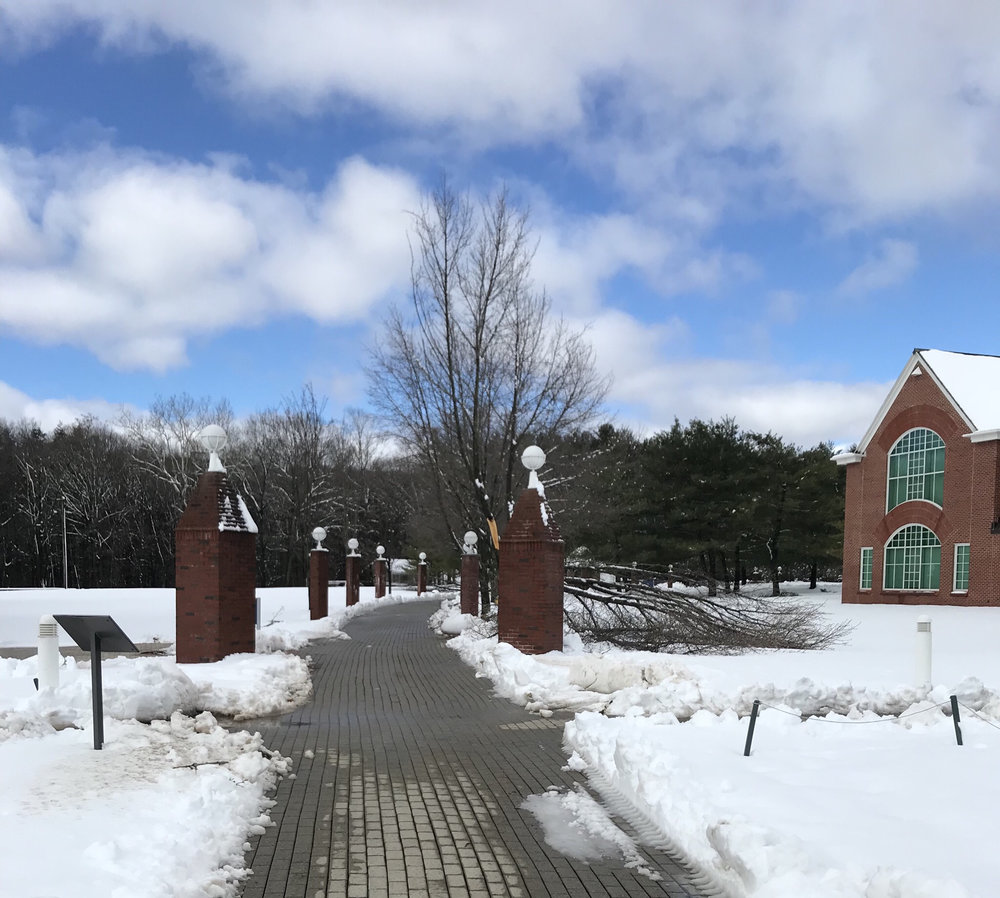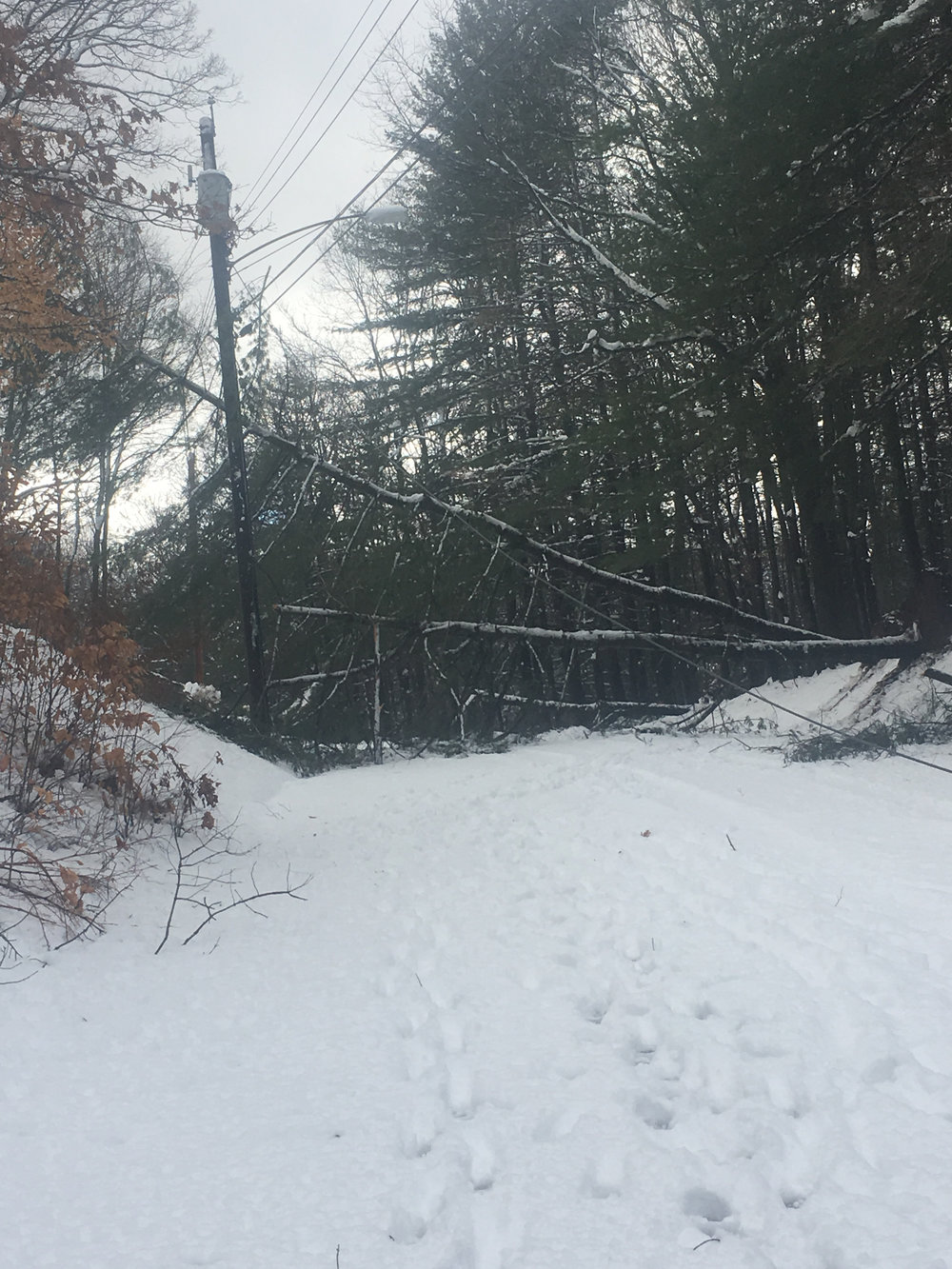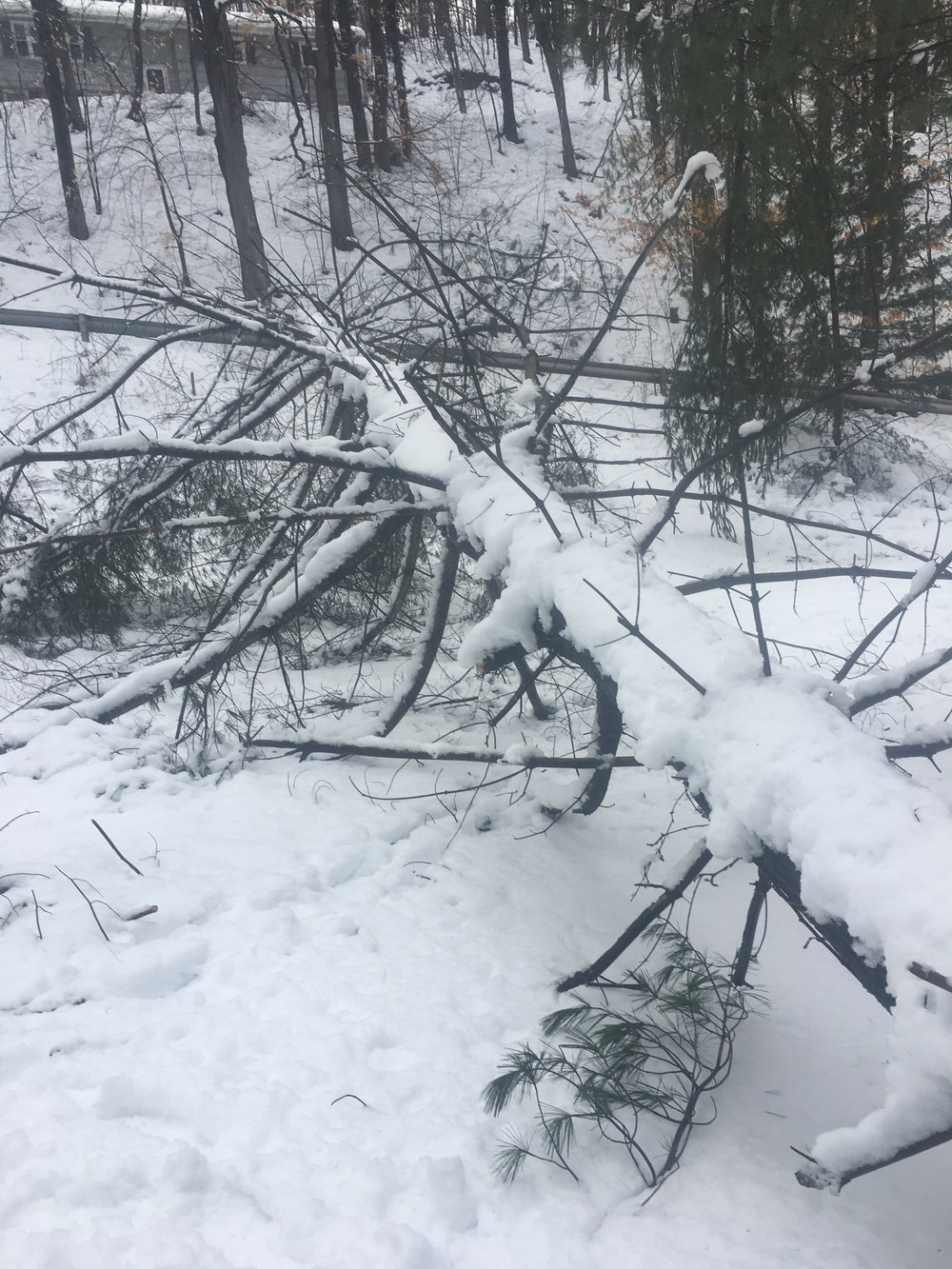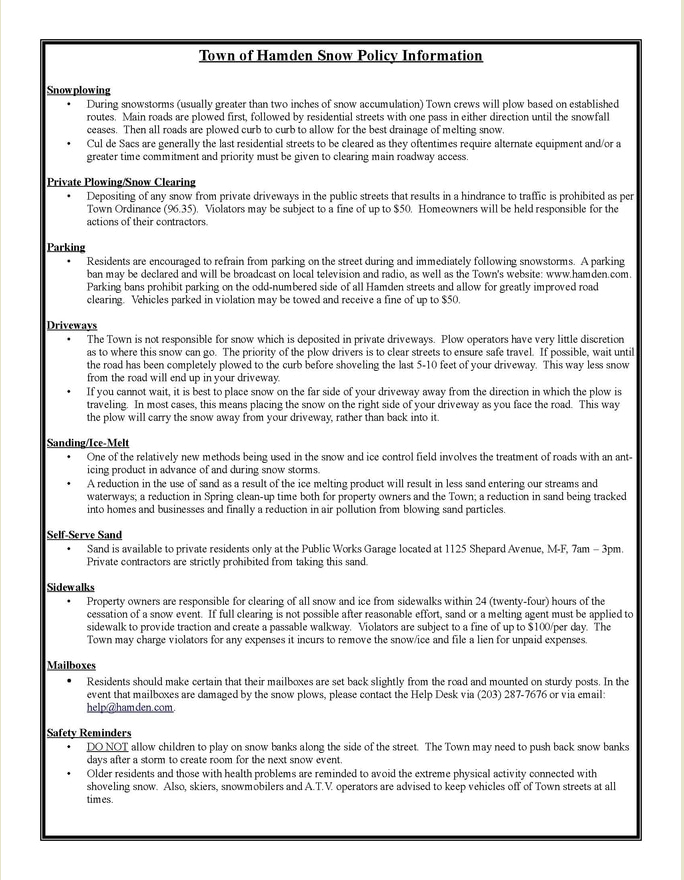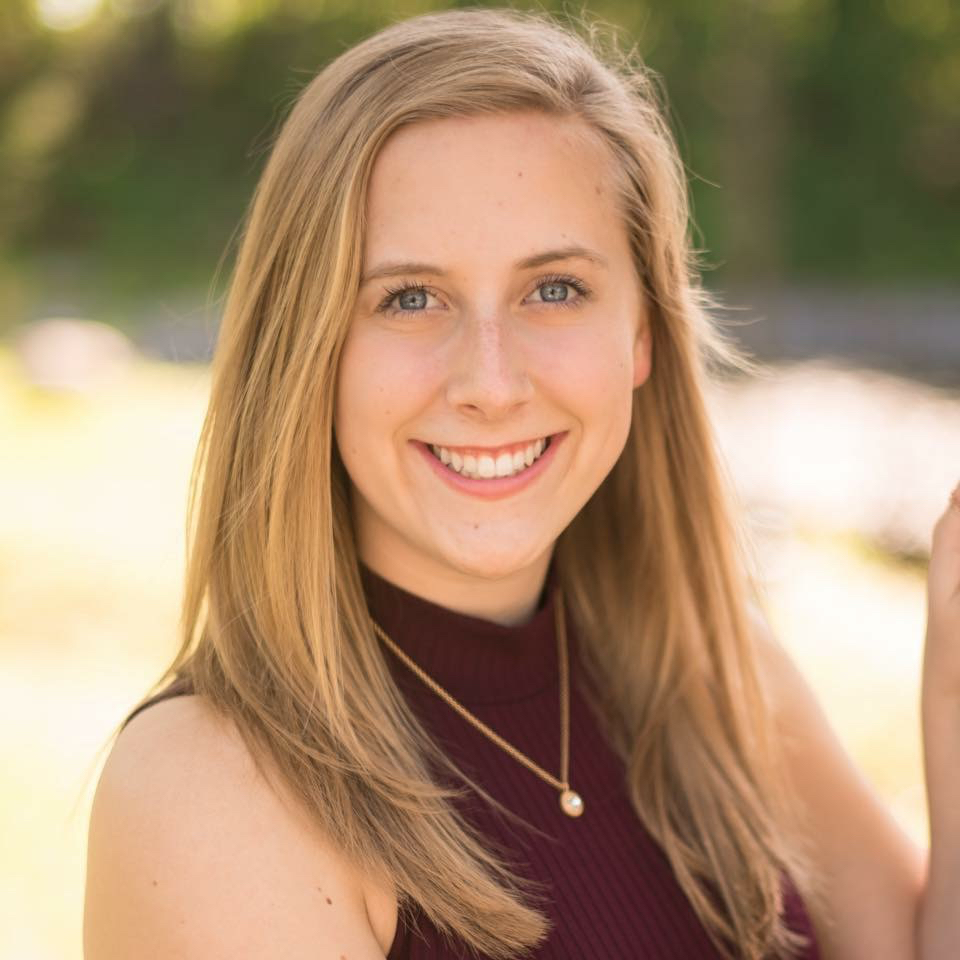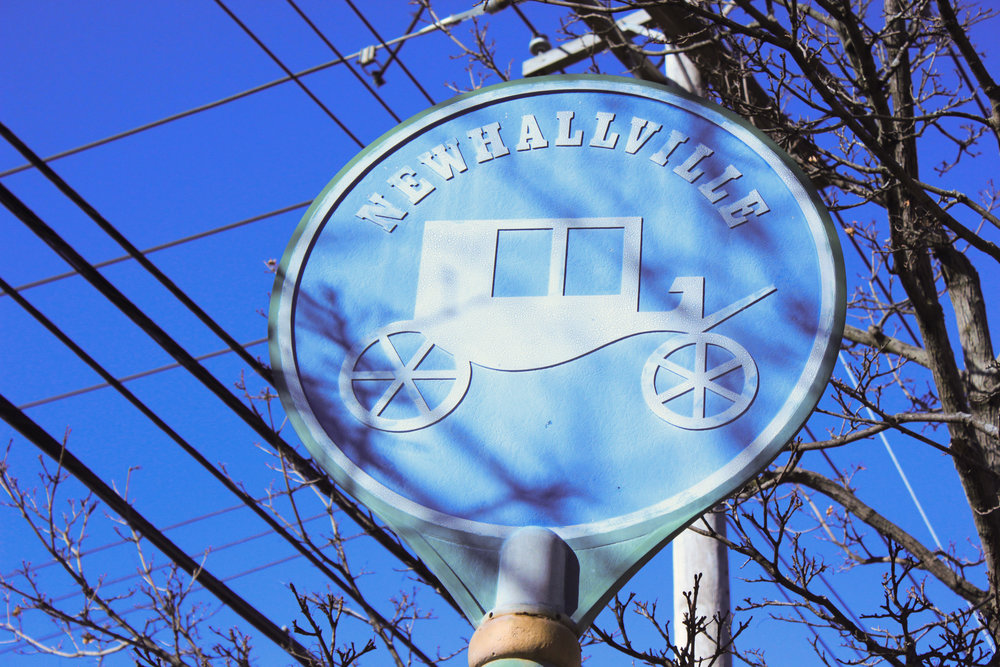
Newhallville community members finally have access to the $1 million federal grant it has waited two years to use.
By Grace Manthey
A Christmas tree on Shelton Avenue lit up what is now called the “Learning Corridor” on the Farmington Canal in Newhallville, New Haven, on a chilly December evening. To the left of the tree a small crowd huddled around a table with vats of hot chocolate. Conversation and laughter warmed the winter air as members of the community celebrated the holidays.
But this “Newhallville Winter Extravaganza” wouldn’t have been possible a few years ago, at least not at the Learning Corridor. According to Jeanette Sykes, who grew up in Newhallville and is a member of the Newhallville Management Team, this area used to be called the “mud hole,” and was a hotbed for shootings.
“That used to be a really bad area, but now we have a local guy who comes to cut the grass, we put some flowers out…[it’s] a big piece in our community which it wasn’t before,” Sykes said.

An entrance to the Farmington Canal near Shelton Avenue.
From 2011 to April 2014, Newhallville had two to three times the city crime rate in major violent crime categories. The Learning Corridor transformation is just one example of how residents working on the Newhallville Safe Neighborhood Initiative (NSNI) are trying to reduce that number.
And now the NSNI has a $1 million federal grant to work with.
At the end of October, after two years of meetings, drafts and planning, the Department of Justice approved the grant for implementation.
Over half of the usable budget (minus employee benefits and expenses) will be going to youth-oriented programs, which offer mentoring programs, employment opportunities, and activities designed to keep kids off the street. The grant will give over $200,000 to organizations like the Promised Land Group, the NAFI Youth Police Initiative, the Newhallville Neighborhood Corporation, The Perfect Blend Mentoring Program, Newhallville YouthStat and Newhallville Ambassadors Program over the next two years.
The community members working on the initiative will give the remaining usable funds to community policing and beautification programs, such as the Neighborhood Housing Services and sub-grants aimed at violent “hot spots” and “community cohesion projects through a competitive mini-grant process.” Also, the grant will give to community programing, like the holiday party at the Learning Corridor.
Finally, the Farmington Canal will get a makeover, courtesy of the Byrne Grant. Funding will allow for more lighting and cameras, as well as fixed workout equipment and chess tables.
Roll over each pie title to learn more about what each category represents.
Residents say that positive changes seem to be coming out of the grant. But it’s been a long wait that has had its challenges.
The grant application was originally submitted on May 6, 2014. Planning officially began in October of the same year. A few months later in January 2015, it was approved by the New Haven Board of Alders.
But the approval process was nowhere near finished, according to New Haven Youth Services Director Jason Bartlett.
“Ordinarily when you write a grant…you say I’m gonna do all these prescriptive things and they give you the money and then you have to do it. That’s not what happens here,” Bartlett said.
According to Bartlett, the approval process for grants like the Byrne grant are usually long. But while the city worked with the DOJ to finalize the planning and budget for the grant, the DOJ expected officials to start building “community cohesion” to create support for the initiative and the grant.
“These grants are targeted toward neighborhoods that are systemically dysfunctional…[with] lots of problems on both the political level as well as dealing with difficult demographics. And a lot of times some of Byrne Grant communities, you know, they don’t even want the money. We actually faced that question here in New Haven,” he said.
Bartlett said a lot of it has to do with “Yale fatigue.” With Yale being so close and such a high profile university, many people in communities like Newhallville feel like “lab rats” when grant money comes through, and they feel like a lot of the research is more about helping the university than helping the people.
To fight that “Yale fatigue,” and build community cohesion, Bartlett and the city were then forced to “do some of the work without the money.”
In October 2015, one year after planning had officially started, Bartlett hired Arthur Edwards as project manager for the initiative. As a native of Newhallville, Edwards played an important role in building trust between community members and city officials.
“I saw it as an opportunity to be that person to really facilitate positive change in Newhallville … We already knew that there was a trust factor on several levels that would have to be worked out … I thought I would be a great fit being from the area and knowing a lot of the residents in Newhallville,” Edwards said.
“I stayed focused on the fact that collaboration is key, and the only way that we are going to get change is through a collective effort,” he continued.
To facilitate that “collective effort,” Edwards set up a governance council of 13 people to serve as his advisors and representatives of the Newhallville community. The council included three alders, leaders from the Newhallville Management Team, the Board of Education, religious leaders and regular community members.
Edwards and the council continued the work that Bartlett started.
So while working with an organization called the Local Initiatives Support Corporation (LISC), a non-profit community development financial institution, to get approved by the U.S. Department of Justice, Edwards and Bartlett engaged with young people, started a program called YouthStat, invested in beautification projects around “hot spots” like the Farmington Canal, started a clean streets initiative and worked with the New Haven Police Department. All of this to prove the long term effects to the DOJ.
“You’re basically making an argument in writing on paper that what you’re doing is going to have a lasting impact on those hot spots and somehow you’re going to alleviate the hot spots in the neighborhood and that’s going to last beyond the two years and the million dollars,” Bartlett said.
For Bartlett, Edwards, Sykes and the rest of the governance council, the decision of how to divvy up the money to ensure sustainability in the community wasn’t an easy one.
“The biggest challenge for me was the communication between various governments … again you’re talking city to federal … the turnaround for information was very challenging and frustrating at times,” said Edwards.
But it wasn’t just communication between city and federal departments that hindered a smooth planning period.
“Everyone was so passionate about what they believe in,” Sykes said. In community meetings the governance council held about the grant, Sykes said there were definitely arguments over whether the money should be spent on elderly, youth, redevelopment or activities. However Sykes assured the community members that no matter what the money was spent on, “everything intertwines.”
“I said to them even if you do a youth program or a youth workshop, a youth workshop can help the elderly. What about the elderly people in our community that still have their houses but they can’t do their lawn? Or they can’t do the snow removing? Well maybe that’s a job we can develop for a young person to do,” Sykes said.
She continued and said that once the community was able to refocus the passion to sustainability, that was when the transition become smoother.
“We do have a lot of great organizations. And a lot of little organizations that have been around for 10 years, 15 years, 20 years. We went wow! You’ve been doing this all this time? Okay well you need to come to the table,” Sykes said.
It may be difficult, though, to conclude how much this initiative has helped curb crime in the neighborhood. According to crime data from the New Haven Police Department, between 2015 and 2016 violent crime in police district seven, where Newhallville falls, actually rose from 11 percent to 14 percent relative to city-wide violent crime rates.
Up to December 3, 2017, however, the total relative violent crime rates did drop one percentage point to 13%. And after a spike in 2015, total crime in the district seems to be dropping. (See chart)
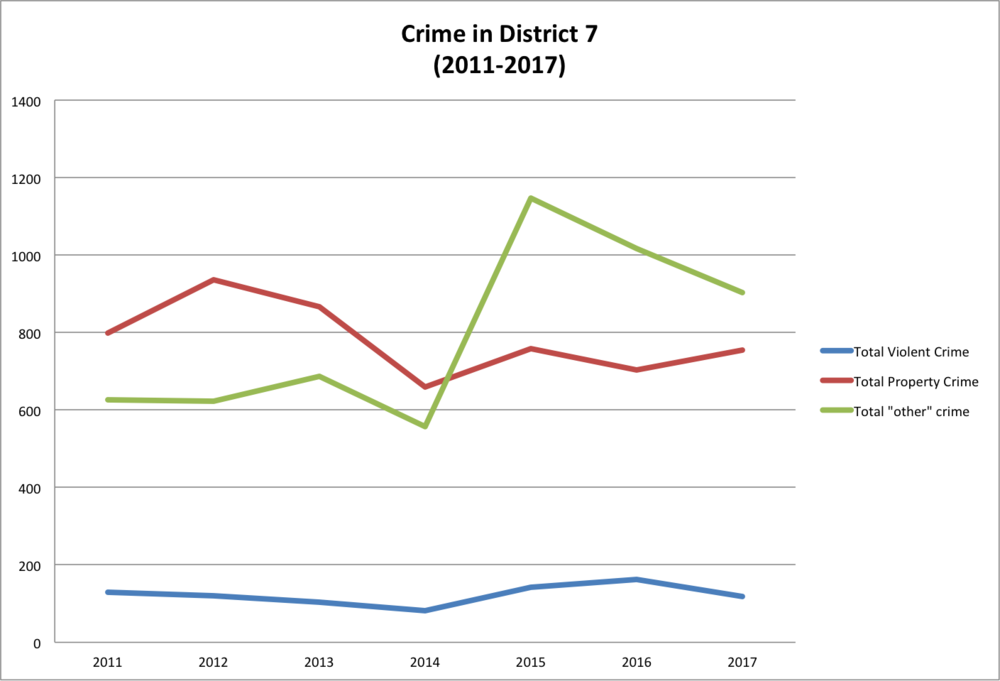
Numbers based on data collected from the New Haven Police Department.
But the primary goal of the initiative and the grant is long-term sustainability, and implementation only started a relatively short time ago. So despite the fact that according to Sykes, talks of this initiative started nearly a decade ago, seeing a significant difference in a year may not be realistic.
“I think we need to get the bad rep off of us,” Sykes said. “I think that every community has their strength and every community has things that they can work on. And I think when people hear Newhallville they automatically go to the negative. And it’s not all negative. [There’s] a lot of positive that happens in Newhallville.”
By investing the positive aspects of Newhallville: the youth, and the long-lasting projects, community leaders hope the DOJ and city goal of sustainability will become a reality. According to Bartlett, in two years “a million dollars is not that much money. So what you’re doing, you want to be able to sustain it so that there’s real and lasting transformation.”
Because at the end of the day, according to Sykes, “Our message is we are committed to our community, we love Newhallville and it’s not just a safe haven for us, it’s a loving community.”
Above, it is easy to see the time it took for the DOJ to approve the grant, in comparison to when New Haven officials originally submitted the application.
